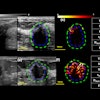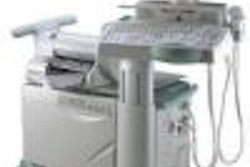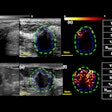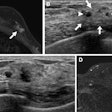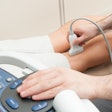(Ultrasound Review) Recent research by French obstetricians at the Hôpital de Poissy found that 41% of women with severe preeclampsia who had HELLP syndrome demonstrated liver abnormalities on ultrasound before biological abnormalities were detectable.
According to the American College of Obstetricians and Gynecologists patients with HELLP syndrome, a severe variant of preeclampsia, have hemolysis, elevated liver enzymes, and low platelet count. In this study reported in the Journal of Ultrasound in Medicine, all patients eventually developed HELLP syndrome, and seven of these developed postpartum.
They performed serial ultrasound examinations on 32 women with severe preeclampsia and acute right upper quadrant and epigastric pain over a 12-month period. "On each sonogram we observed the liver size and texture, ‘periportal halo’ sign, gallbladder wall, Glisson capsule thickness, painful compression of the liver and gallbladder, and ascites," they reported. They also examined the pancreas, spleen, kidneys, and uterus and repeat sonography was performed after delivery.
Twenty-eight women displayed liver abnormalities at the initial ultrasound scan including liver hypertrophy, hyperechoic thickening of the periportal area, striated thickening of the gallbladder wall, hyperechoic thickening of the Glisson capsule, hyperechoic areas within the liver, subcapsular hematoma, and subcapsular calcification.
They also reported that transducer pressure applied over the liver increased abdominal pain in one-third of the women. None of the women had a tender gallbladder (negative Murphy’s sign) and no gallstones were detected. Sixteen patients had ascites and eleven had a pleural effusion.
The specific measurement they used for diagnosis were as follows: right midclavicular sagittal liver length > 16 cm or sagittal liver length at the xiphoid line >10 cm; gallbladder wall thickness >3 mm; Glisson capsule thickness >1 mm; and periportal thickening >5 mm. Ultrasound abnormalities were no longer apparent on follow-up sonograms performed after delivery.
They concluded, "serial sonographic examinations could therefore contribute to the obstetric care of these women" and "preeclampsia and HELLP syndrome should be routinely checked for in all pregnant women with acute abdominal pain." Ultrasound imaging should be performed in patients with epigastric and right upper quadrant pain during late pregnancy to differentiate HELLP syndrome from other medical or surgical dilemmas, they suggested.
Abdominal pain and preeclampsia -- Sonographic findings in the maternal liverSuarez, B et al
Department of obstetrics, Hôpital de Poissy, Poissy, France
J Ultrasound Med 2002 October; 21:1077 -1083
By Ultrasound Review
December 12, 2002
Copyright © 2002 AuntMinnie.com



